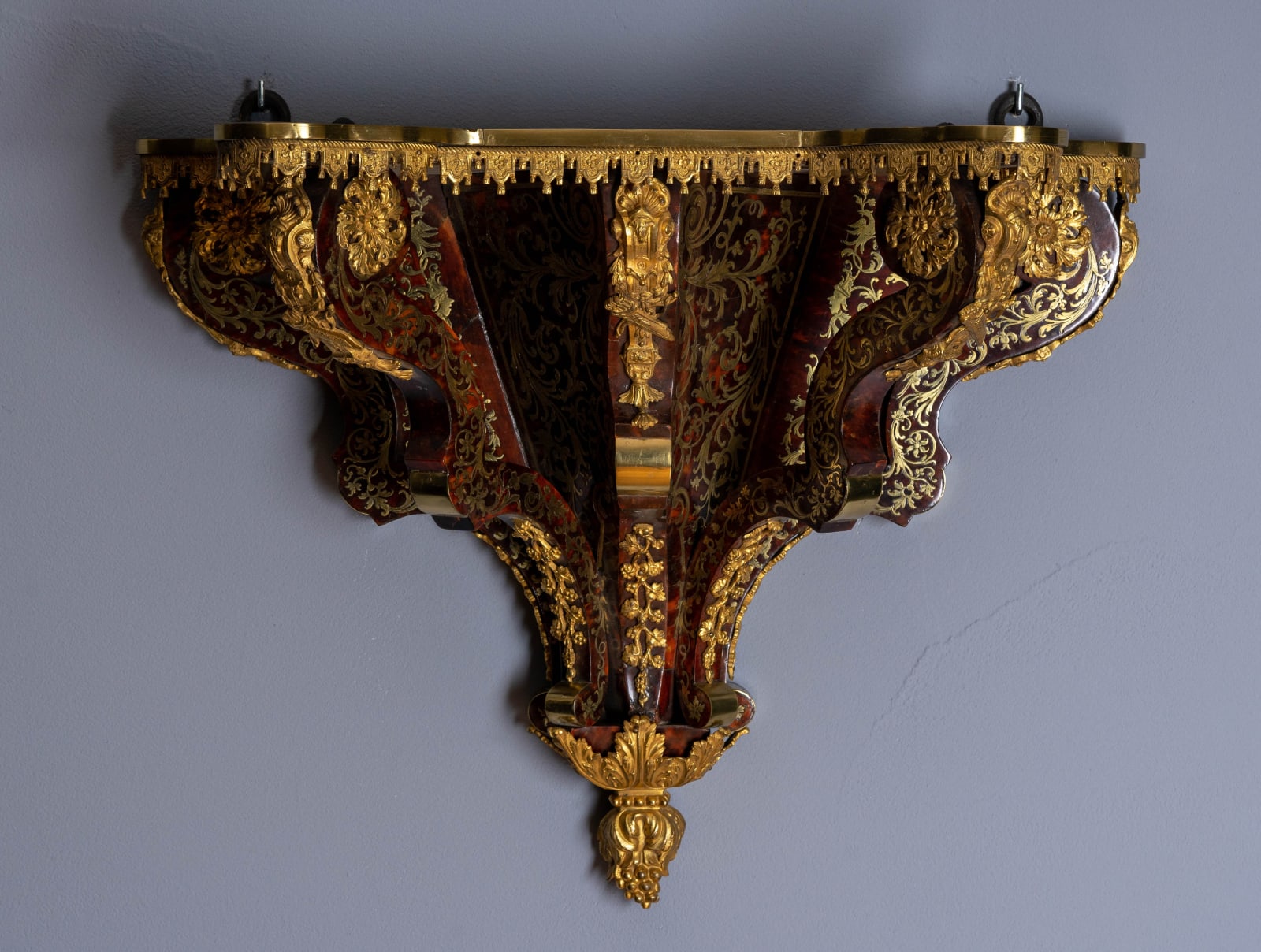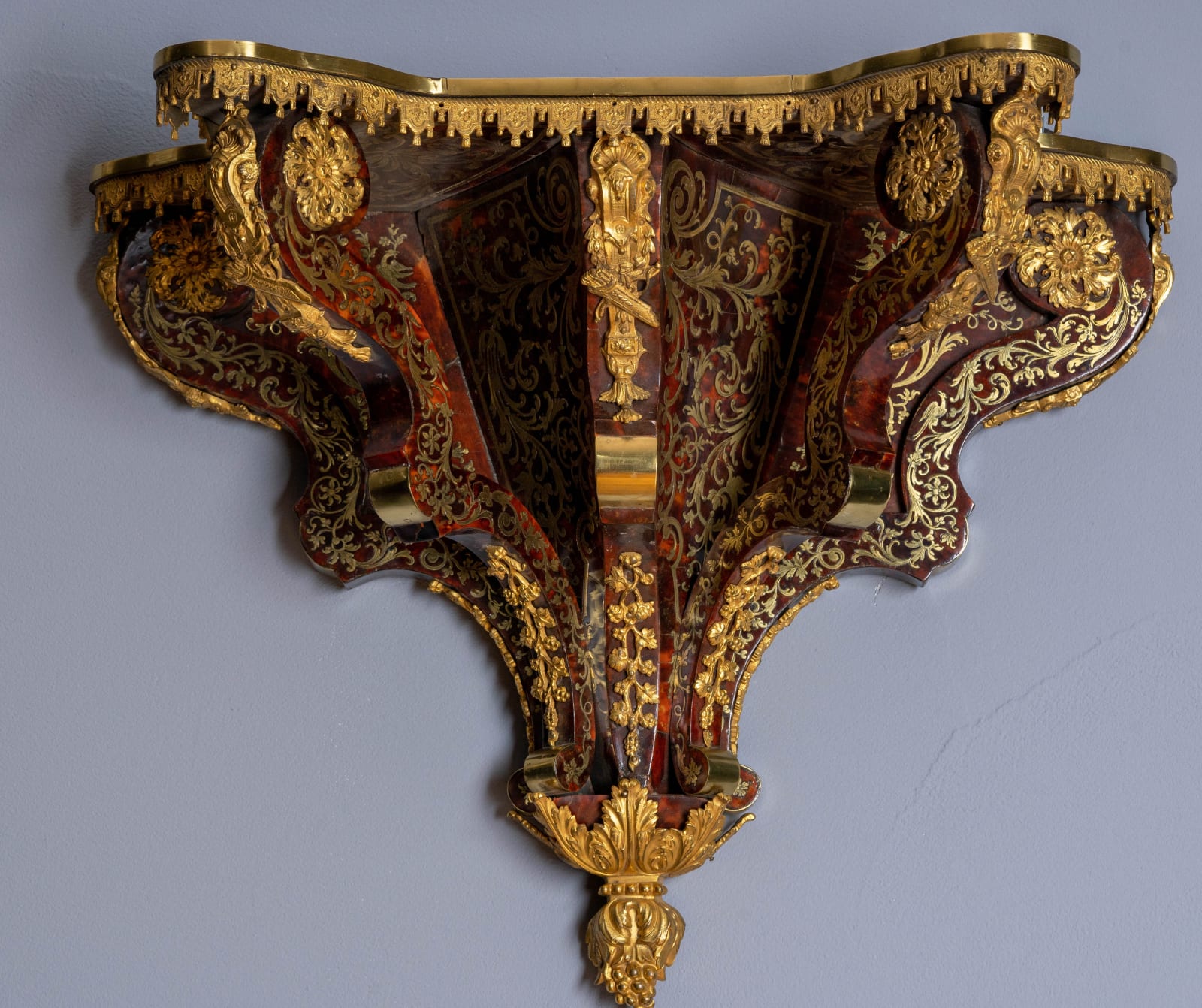attributed to André-Charles Boulle
A LOUIS XIV GILT BRONZE MOUNTED INLAID BRASS AND TORTOISESHELL MARQUETRY WALL BRACKET , Paris, date circa 1700
Height 49 cm, width 59 cm.
Further images
A magnificent and very beautiful Louis XIV gilt bronze mounted inlaid brass and tortoiseshell marquetry wall bracket, intended to display a clock, attributed to André-Charles Boulle, probably inspired or based on a design by Jean Bérain, inlaid overall with refined première-partie foliate scrolls and arabesques within shaped panels, the bracket top of sinuous outline above an elaborate gilt bronze lambrequin frieze, above a shaped back and three open-work S-shaped scrolling supports of which the two outer ones are headed on their sides by rosette mounts and each mounted on the front upper section with sumptuous mounts enclosing a quiver of arrows above lower foliate spray mounts, the supports converging at the tapering base, terminated by a berried, foliate and acanthus-wrapped gilt bronze boss
Paris, date circa 1700
Height 49 cm, width 59 cm.
Literature: Tardy, “La Pendule Française, Ire partie, de l’Horloge Gothique à la Pendule Louis XV”, 1967, p. 123, illustrating a similar shaped and decorated tortoiseshell and brass marquetry clock bracket, housed in the Musée des Arts Décoratifs, Paris.
This handsome clock bracket reflects the refinement in taste for luxury and ostentation that prevailed during the reign of the Sun King, Louis XIV. Given its superb quality of design and execution, it was most probably made by the royal ébéniste André-Charles Boulle (1642-1732), who perfected the art of brass and tortoiseshell inlay and from whom the technique gained its name. This technique, which was already known, involved a gift for artistic invention as well as great skills in using a fretsaw to cut out the brass and tortoiseshell sheets. These were laid one on top of one another to ensure that the cut-out pieces of brass perfectly fitted into the spaces left in the tortoiseshell and vice versa. Boulle’s furniture was often made in pairs, the areas with brass-in-tortoiseshell being known as première-partie, as we see here, while the negative was known as contre-partie which features the brass in the dominant position as the background, in which fine shaped tortoiseshell fillets and panels were then inlaid.
Boulle created a variety of furniture as well as complete clock cases and accompanying bracket supports, which are often referred to as cul-de-lampe. Boulle’s workshop was housed in the Palais du Louvre, not far from the Paris lodgings of the influential artist and royal designer Jean Bérain (1640–1711), with whom he often collaborated. Bérain, who was responsible for designing costumes, stage sets, and royal ceremonies at the Académie Royale de la Musique since 1680, produced a series of ingenious creations that incorporated acanthus and laurel leaves, palmettes and grotesques, sometimes mixed with whimsical figures and animals. He also designed individual brackets, including similar pieces to the present piece.





